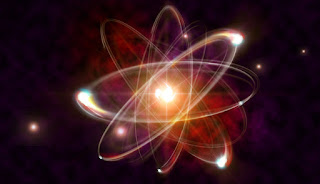Quantum physicists picked apart the unified theory of physics that Einstein’s theory has relativity offered, during the mid- to late-twentieth century. However, the physics of the large was governed by gravity and only quantum physics could describe observations of the small. Since then, a theoretical tug-o-war between gravity and the other three fundamental forces has continued as physicists try to extend gravity or quantum physics to subsume the other as more fundamental. Although repeated tests are required to confirm these abnormalities and a confirmation in this would signify a turning point in this one of the most fundamental descriptions of particle physics till date.
As per the Standard Model predictions of frequency- the quantum physics has recently explored that mesons don’t decay into kaon and muon particles most often. The authors have agreed on that enhancing the power of the Large Hadron Collider will surely reveal that a different kind of particle accountable for this discrepancy.
However, flaws in the data and the study might have caused the conflicts. In place of the new particle, an improved form of Large Hadron Collider would be able of proving a boon for several projects on the cutting edge of physics.
A Standard Model
A Standard Model is something that is a well-established fundamental theory that explains the three of the four fundamental forces is believed to govern the physical reality. These quantum particles appear in two of the basic types, that are the quarks and leptons.
Where Quarks bind together in multiple combinations for building some particles like protons and neutrons. Here, we are already familiar with protons, neutrons, and electrons; as they are the basic building blocks of the atoms.
Whereas, the leptons are known for featuring much heavier versions of electrons such as the muon. The quarks can come together into hundreds of other composite particles. The culprits in this quantum physics mystery were the two of these, the Bottom and Kaon mesons. The Bottom meson is likely to decay with the Kaon meson accompanied by a muon (mu-) and also anti-muon particles.
Extending the Standard Model
Tevong assumes, excepting the statistical or theoretical errors, that these anomalies mask the presence of some of the entirely new particles, that are called as the leptoquarks or the Z prime particles. Quantum excitations of new particles are likely to interfere inside of the bottom meson; with the normal decay frequency. In these studies, the researchers have concluded that an upgraded version of Large Hadron Collider is helpful in confirming the existence of the new particles that later is helpful in making a major update to the Standard Model in the process.
Tevong has stated that- “It would be revolutionary for our fundamental understanding of the universe”. He added that- “For particle physics […] it would mean that we are peeling back another layer of Nature and continuing on a journey of discovering the most elementary building blocks. This would have implications for cosmology since it relies on our fundamental theories for understanding the early universe”. “The interplay between cosmology and particle physics has been very fruitful in the past. As for dark matter, if it emerges from the same new physics sector in which the Zprime or leptoquark is embedded, then we may also find signs of it when we explore this new sector.”
The Power to Notice
As of now, scientists at the Large Hadron Collider have till date only observed the anomalies and ghosts touching on the particles that exist at some higher energy levels. In accordance with proving their existence, Tevong stated that- “need to confirm the indirect signs […], and that means being patient while the LHC experiment gathers more data on B decays to make a more precise measurement.” He also added that “We will also get an independent confirmation by another experiment, Belle II, that should be coming online in the next few years. After all, that, if the measurement of B decays still disagrees with the predictions of the Standard Model, then we can be confident that something beyond the Standard Model must be responsible, and that would point towards leptoquarks or Zprime particles as the explanation.”

